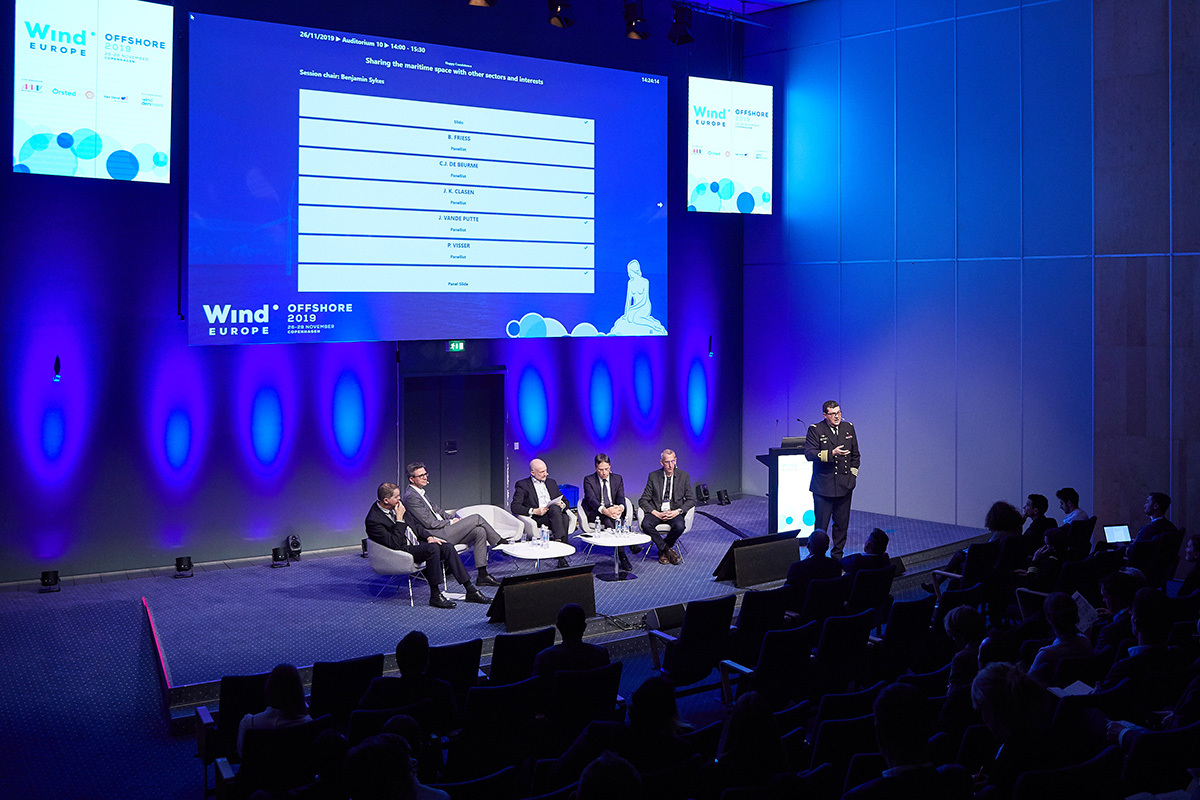Active collaboration with military, shipping and conservation “essential to offshore wind success”

The future of Europe’s maritime space lies in multiple-use – and not a territorial ‘this space is mine and that space is yours’ attitude. This was the message from a diverse range of maritime space users speaking today at WindEurope Offshore 2019.
For Europe to make the leap from 20 GW offshore wind today to 450 GW by 2050, offshore wind needs to become fully integrated in a happy coexistence with other users of maritime space. This includes nature conservation, military, fishing and shipping interests.
Greenpeace’s Jan Vande Putte said that, with strict conditions, wind warms can be built in nature conservation areas. He added that wind can increase the health of the sea; healthy biodiversity is good for the planet while healthy climate is essential for biodiversity; offshore wind can play a key role in facilitating this relationship. But this needs a systemic approach – sector integration is key. If we want to avoid major blockages in the area of nature conservation, the wind industry needs to commit to protecting nature as a whole, and not only focussing on turbines and wind farms.
Captain Jan De Beurme of the Belgian Navy also underlined the importance of collaboration. Wind farms, like nuclear sites, require protection because of their importance to national security. This means that the military needs to understand and be familiar with offshore wind. The Belgian Navy is already looking into docking stations for military drones and helicopters at offshore charging stations. Capt. De Beurme encouraged the industry to actively reach out to military interests.
Pim Visser of VisNed echoed the call for developers to truly engage with fishery organisations. He warned that large-scale offshore wind doesn’t just affect the immediate area of wind farms – it can also disrupt shipping lanes and impact on conservation zones. To avoid any issues with fisheries, he said, we need to identify knowledge gaps and potentially establish a joint-knowledge base.
Jacob K. Clasen, Executive Director of Danish Shipping, took up Visser’s point on shipping lanes and planning routes, acknowledging that there may be difficulties in this area. However, he said this was not a do-or-die issue; if the offshore wind industry continues to work in tandem with shipping, all different interests can be met and respected. However, he argued that cross-border cooperation needs to improve.
This was a through-line for all speakers today; communication and collaboration. Bernhard Friess, the European Commission’s Director for Maritime Policy and Blue Economy, said that the various sectors using the sea need to integrate other sectors’ interests and objectives into their operations. A healthy sea requires a healthy relationship between all sea-users. The key thing for all users to do now is to commit to the 450 GW target: this is a must if we are to effectively combat climate change.
How can Europe reach 450 GW of offshore wind? Find out in our new report Our Energy, Our Future, How offshore wind will help Europe go carbon-neutral

